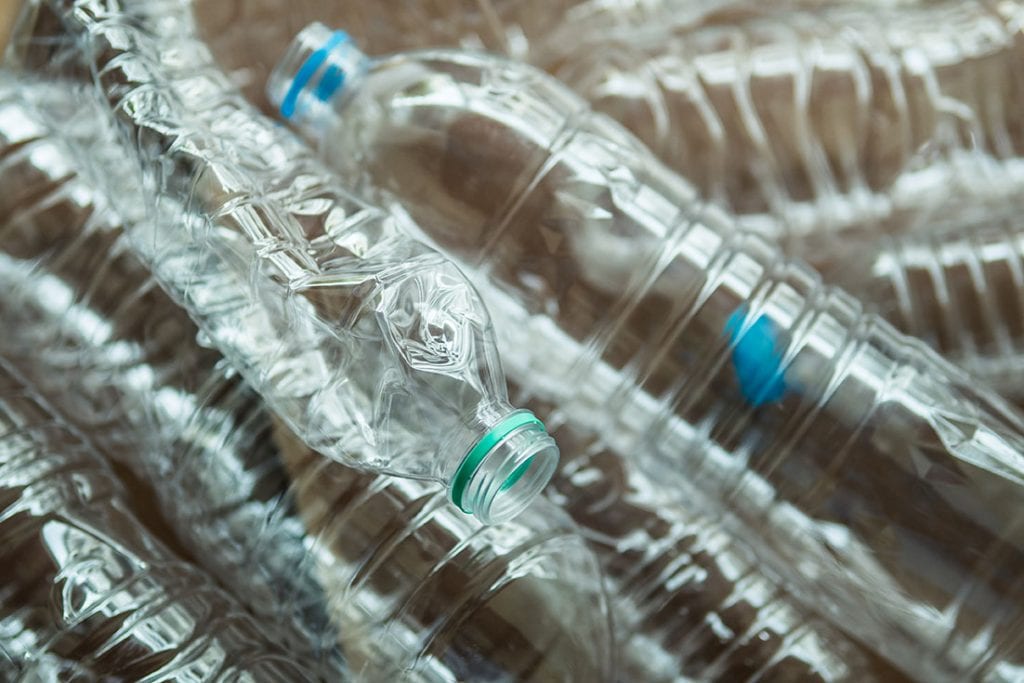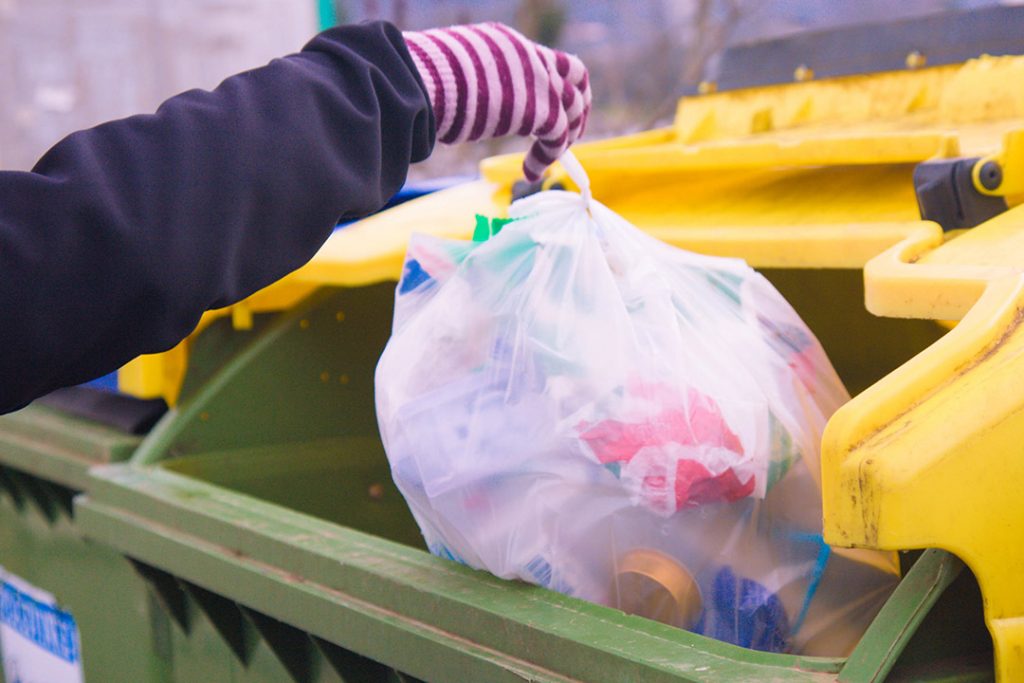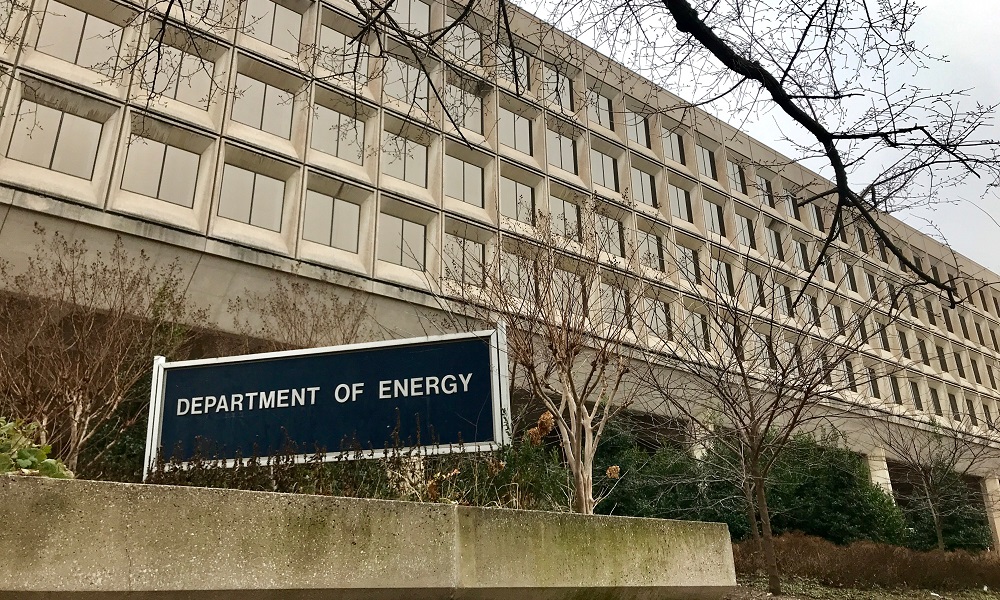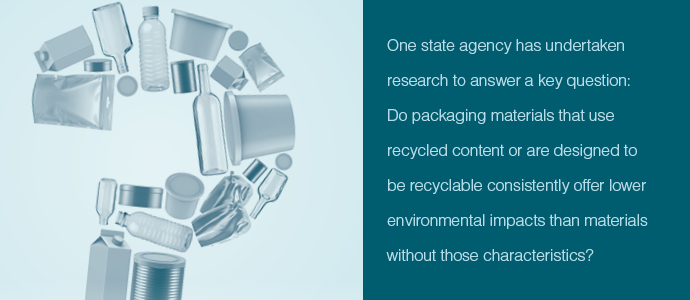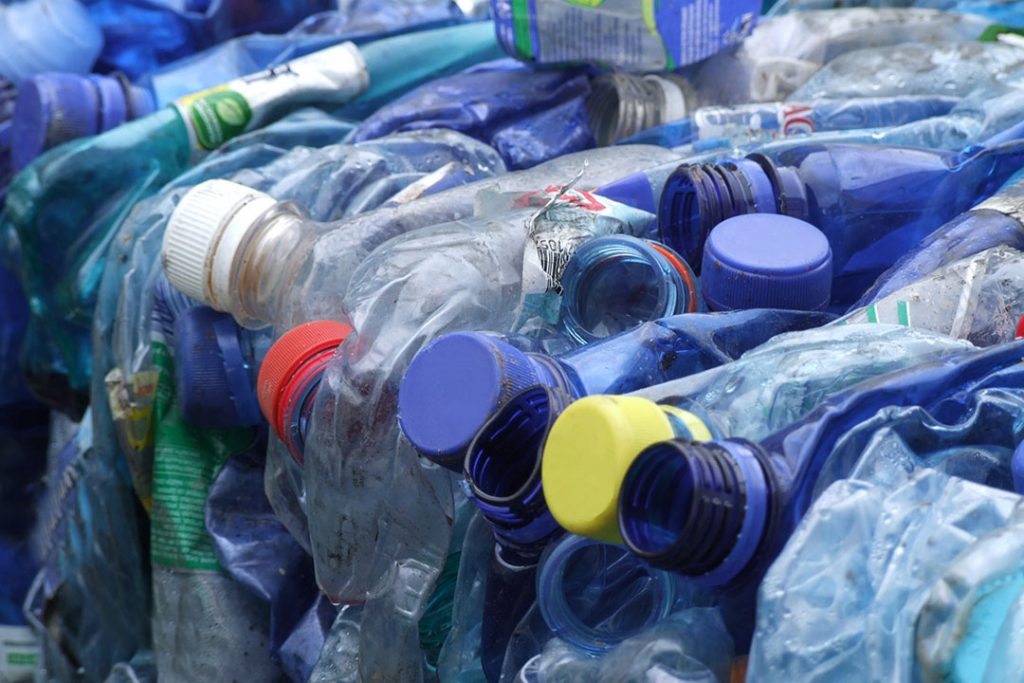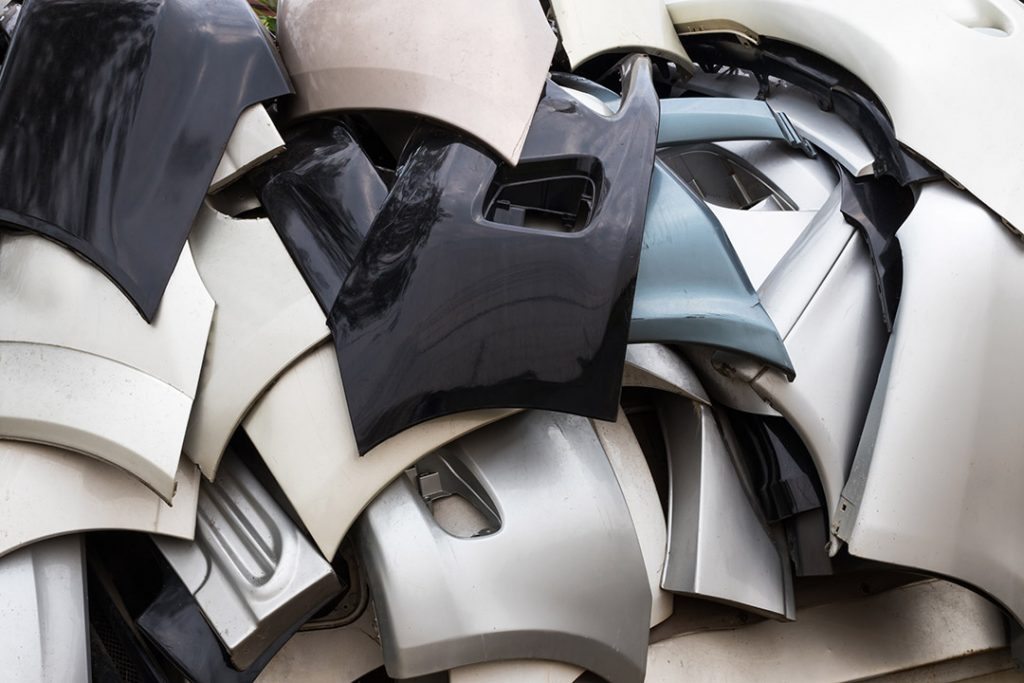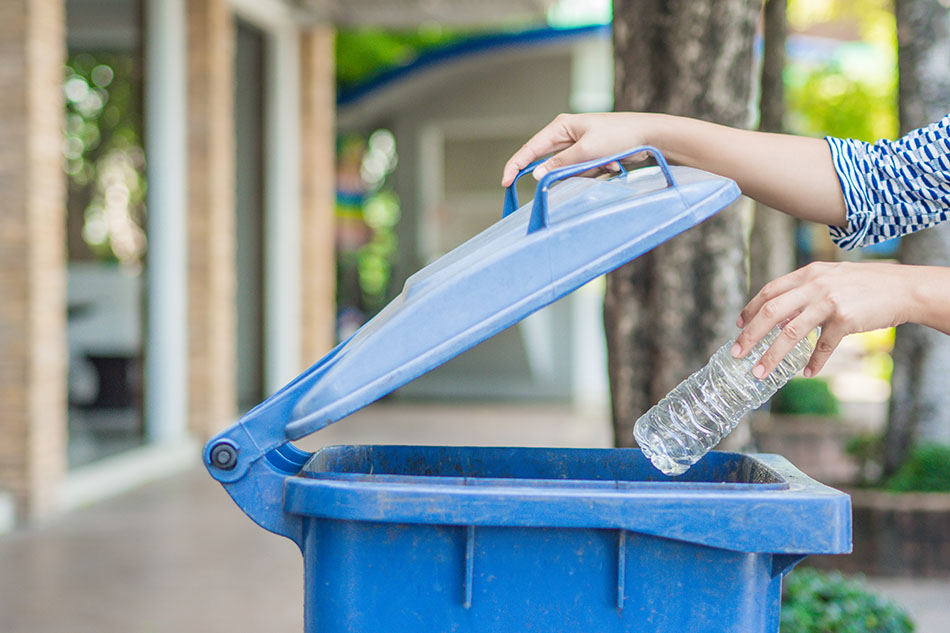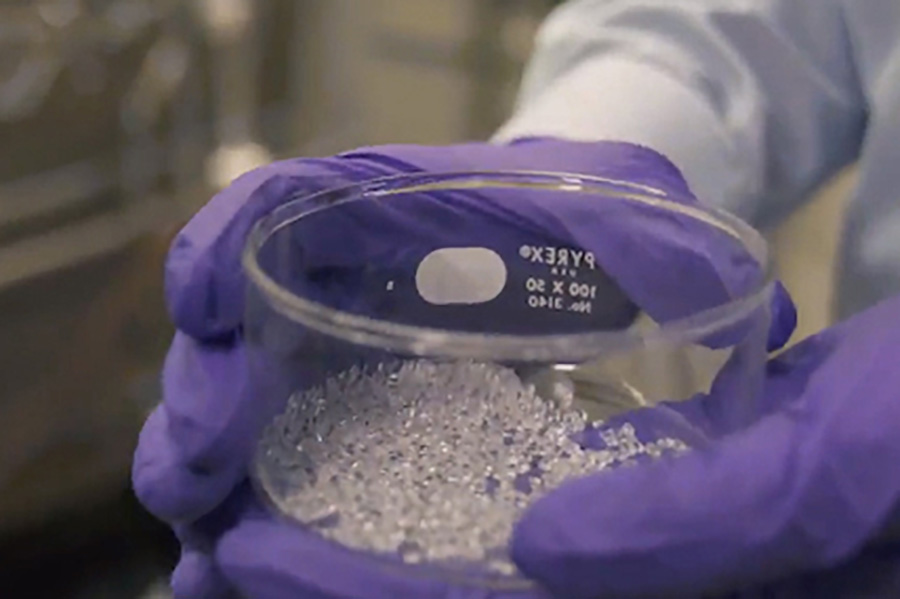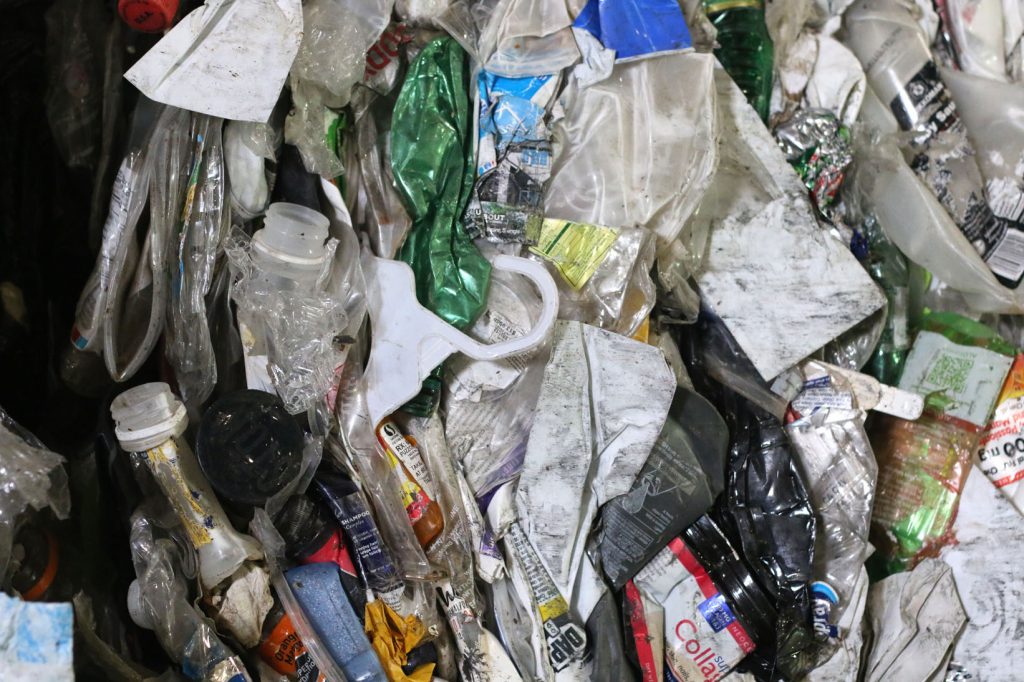
A close-up view shows the wide variety of materials in the mixed-plastic bales. | Jared Paben/Resource Recycling, Inc.
A demonstration project found that by routing mixed bales and MRF residue to a central sorting location, more than 17,000 tons of additional plastics could be captured in the Pacific Northwest each year.


